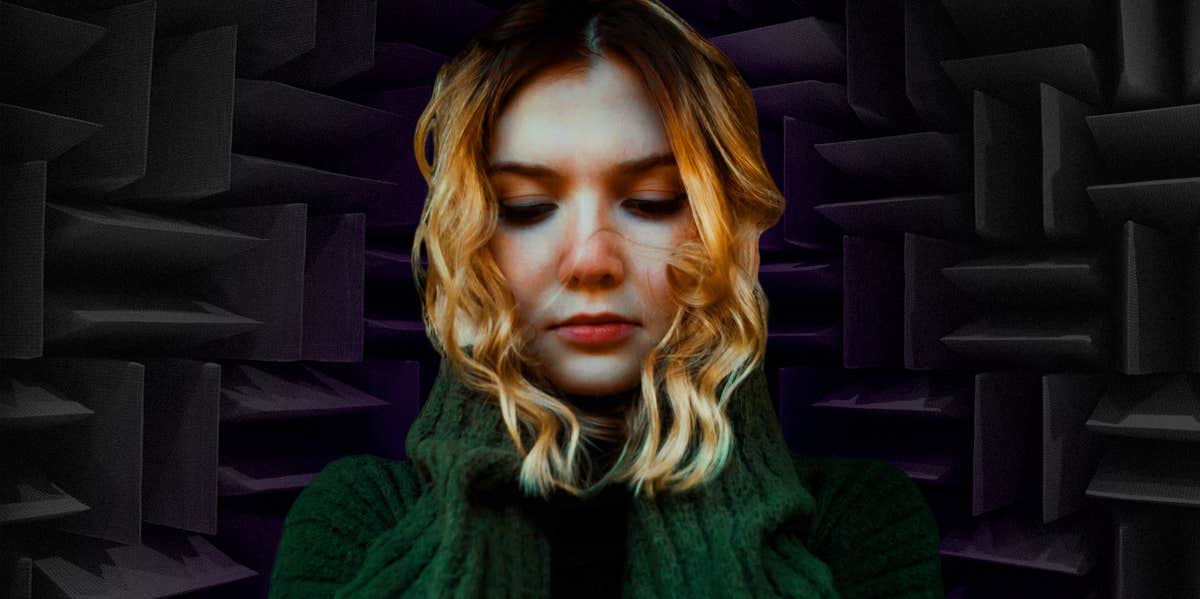The Room That's So Quiet, Nobody Has Stayed In It For More Than 45 Minutes
It's so quiet, you can hear the blood pumping through your veins and your bones creaking as you move.
 Valeri Vatel / Shutterstock, Microsoft
Valeri Vatel / Shutterstock, Microsoft Everyone could use a little peace and quiet from time to time. The world around us is filled with noise and even the quietest places have an underlying background noise you can hear if you really pay attention.
There are mysterious noises like the Hum and man-made noises like the Shepard tone that can actually drive people crazy. On the contrary, a complete and total lack of sound can be just as deafening.
And there is a place that is home to the quietest room in the world.
What is the world’s quietest room?
In 2015, Microsoft successfully created the quietest room on the planet at their headquarters in Redmond, Washington. The room is so quiet, people have reported that you can hear yourself breathing, hear your stomach gurgling, hear your heart beating, and even hear your bones grinding as you turn your head.
It sounds like the most peaceful place you could possibly be, but it turns out that no one has been able to withstand the silence for more than 45 minutes!
The specially built room that challenges people to sit still as long as possible is called an "anechoic" (without echo) chamber.
The chamber in Washington is not the only one, but it does hold the Guinness World Record for the quietest place, a title it took from another chamber at Orfield Laboratories in Minnesota who had previously registered negative decibels of -9.4.
Anechoic chambers are designed in a structure that emulates an onion, isolating it from the world around it and any nearby buildings. It has six layers of concrete and steel, fiberglass wedges mounted on the floor, and ceilings and walls that diminish sound waves before they can echo back into the room.
The floor of the room is made of a grid of cables that absorb sound, and the room itself sits on top of several springs that minimize vibration, and the structure is separated from the building surrounding it.
What is the quietest room in the world used for?
The quietest room in the world was created with the intention of building a place where the ambient noise is below the threshold of human hearing.
In addition to seeing how humans respond to the muted environment, anechoic chambers are used by companies to test their products. Think: testing electronics.
The rooms are also used by NASA to prepare astronauts for their journey to space. The silence of space can be disorienting, and by acclimating them in advance, the astronauts adjust more quickly.
The chambers also provide a place for organizations like the National Acoustics Laboratories (NAL) to research the abilities of earmuffs and earplugs, commonly used to combat workplace noise. The tests are more accurate because there is no peripheral noise in the room.
Why do people go crazy from spending time in the room?
Because the room is so quiet, you might hear your own breathing and it sounds loud. Or perhaps you’ll hear your heart and think it's going to beat right out of your chest. But that doesn’t stop people from wanting to experience it first-hand.
Thousands of people visit the anechoic chamber annually. The experience includes turning off the lights and creating visual and audio silence. There is no sensory noise either, which causes people to lose their balance when they start walking around.
In the noiseless environment, you become the only sound, and you can hear every one of your body functions taking place! The thud of your heart, depth of your breath, your lungs filling with air and releasing it, and your stomach loudly digesting food — all become as clear as a bell.
The dark and quiet remove the perception tools that you usually use to balance and move around, causing confusion and disorientation. Most people can only tolerate it for a short time before needing to get out and gain their composure.
NyRee Ausler is a writer from Seattle, Washington, and author of seven books. She covers lifestyle and entertainment and news, as well as navigating the workplace and social issues.

